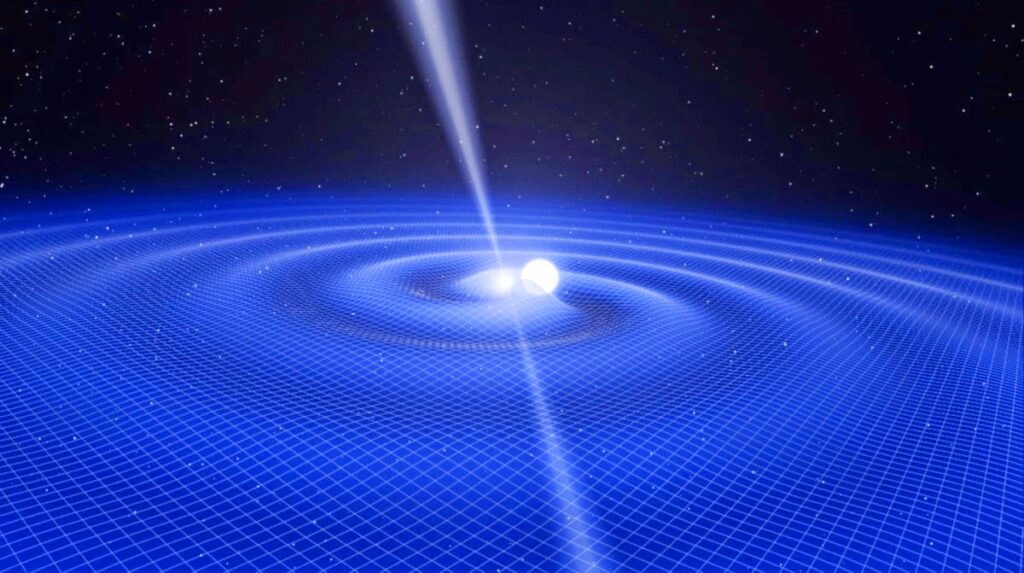
Speed Demons of the Cosmos: Unveiling the Fastest Things in the Universe
Imagine hurtling through space at speeds that defy comprehension. That’s the realm we enter when exploring the fastest things in the universe. But what exactly holds the coveted title? Buckle up, space enthusiasts, as we embark on a thrilling journey to discover the ultimate cosmic speedsters!
The Undisputed Champion: Light Blazes the Trail
When it comes to sheer velocity, there’s only one clear winner: light. In a vacuum, light travels at an astonishing 299,792,458 meters per second (approximately 186,282 miles per second). This cosmic speed limit, denoted by the letter “c,” is a fundamental constant of the universe. According to Einstein’s theory of relativity, no object with mass can ever reach the speed of light.
Here’s why light reigns supreme:
- Electromagnetic Energy: Light is a form of electromagnetic energy, consisting of self-propagating waves that don’t require a medium to travel. This allows it to achieve such incredible speeds.
- The Fabric of Spacetime: Light interacts minimally with the fabric of spacetime, experiencing minimal resistance as it travels.
Celestial Speedsters: Pushing the Boundaries (Almost)
While nothing can surpass the speed of light, other celestial objects come remarkably close:
- Gamma-Ray Bursts (GRBs): These powerful explosions, originating from the most energetic events in the universe, can briefly emit jets traveling at speeds up to 99.97% the speed of light.
- Blazars: These supermassive black holes launch powerful jets of energetic particles that can reach speeds exceeding 95% the speed of light.
It’s important to note that these speeds are exceptional and not the norm for most objects in the universe.
Galactic Speed Demons: A Race Through the Cosmos
Within our own Milky Way galaxy, objects exhibit impressive velocities:
- Neutron Stars: These incredibly dense remnants of collapsed stars can spin at mind-boggling speeds, reaching rotations exceeding 600 times per second at the equator. This translates to velocities near the surface that are a significant fraction of the speed of light.
- Stellar Winds: Stars expel charged particles in a continuous stream called the stellar wind. The speed of this wind varies depending on the star’s type, but some, like hot, massive stars, can have winds exceeding millions of kilometers per hour.
Beyond Our Galaxy: The Expansion of the Universe
The universe itself is constantly expanding, and distant galaxies are receding from us at ever-increasing speeds. However, this expansion is not the movement of objects through space, but rather the stretching of spacetime itself. The rate of this expansion is described by the Hubble constant, currently measured to be around 70 kilometers per second per megaparsec (a unit of distance equal to millions of light-years). This means that for every megaparsec farther away a galaxy is, it’s receding from us 70 kilometers per second faster.
The Things That Technically Aren’t Things: A Glimpse into Theoretical Physics
While the objects mentioned above are very real, theoretical physics explores concepts that push the boundaries of our understanding of speed:
- Tachyons: Hypothetical particles that are theorized to always travel faster than light. However, their existence remains purely theoretical, and they haven’t been observed in the real world.
- Warp Drives: A concept from science fiction that proposes manipulating spacetime to achieve faster-than-light travel. While the concept is intriguing, it violates our current understanding of physics and may not be physically possible.
Conclusion: A Universe in Motion
The quest for the fastest thing in the universe is a fascinating journey that unveils the incredible speeds at which objects move within the cosmos. From the undeniable champion, light, to the mind-boggling velocities of celestial objects and the expansion of the universe itself, we gain a deeper appreciation for the dynamic nature of our existence. As our understanding of the universe continues to evolve, who knows what other speed demons lurk in the vast unknown, waiting to be discovered?




